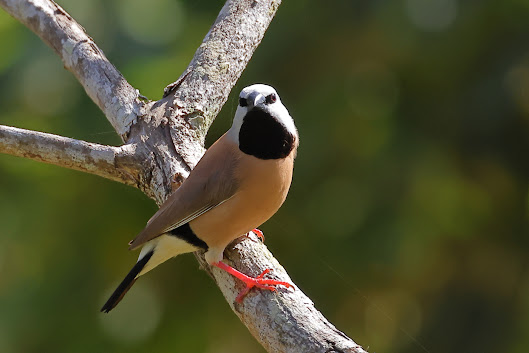
Umbrellas for Rainbow Lorikeets (Trichoglossus haematodus) under the bluest of skies nearing sunset near Ingham? Well, Umbrella Tree (Schefflera actinophylla) flowers and seeds anyway.

The long flowering spikes attract many other birds, honeyeaters, bowerbirds and figbirds. But no other birds seem to have quite so much fun as the Rainbows feeding their faces. It's a little odd that Scaley-breasted Lorikeets - so alike in many ways - do not show the same appetite.
There is another side to the Umbrella Tree. Planters of native gardens, more than ably assisted by birds and small animals, have helped introduce the trees into areas where they are not welcome. Thus (from the DPI):
'The umbrella tree is native to northern Queensland,
north of the tropic of Capricorn. In its natural
ecosystem it has maintained a balance with other
native species, however, when it is grown in
southern Queensland, this fast growing invader
out-competes local native species. It is a prolific
seeder, invading national parks, remnant bushland,
undisturbed forests and reserves, causing harm to
the local ecosystems’ flora and fauna.
It is commonly grown as an ornamental in backyards
as it has a unique look and attracts birds.
Unfortunately, these birds can rapidly spread the
seeds, particularly through native bushland. The
roots of umbrella trees can pressurise building
foundations and block plumbing joints and pipes.
These disadvantages can be overcome by growing
local native species, instead of this invasive plant
from a foreign ecosystem. Appropriate species may
include Celery Wood, Leopard Ash, Native
Tamarind, and Wheel of Fire.'

Just as well Rainbow Lorikeets can't read! Of course, there are more than a few people who think Rainbows also are too much of a good thing, too dominant, greedy and bossy. And much too colourful. Certainly not a bird that does things by halves.
































